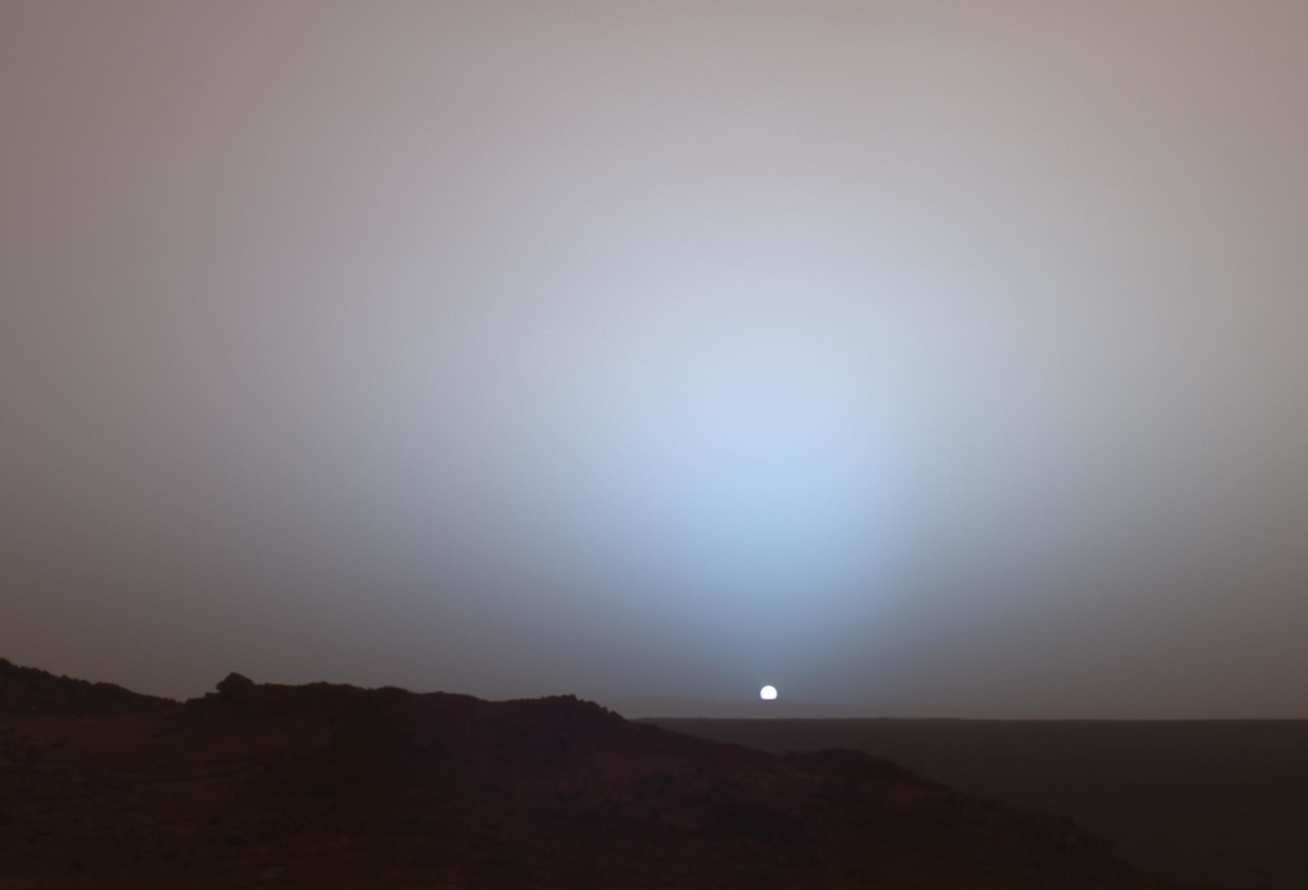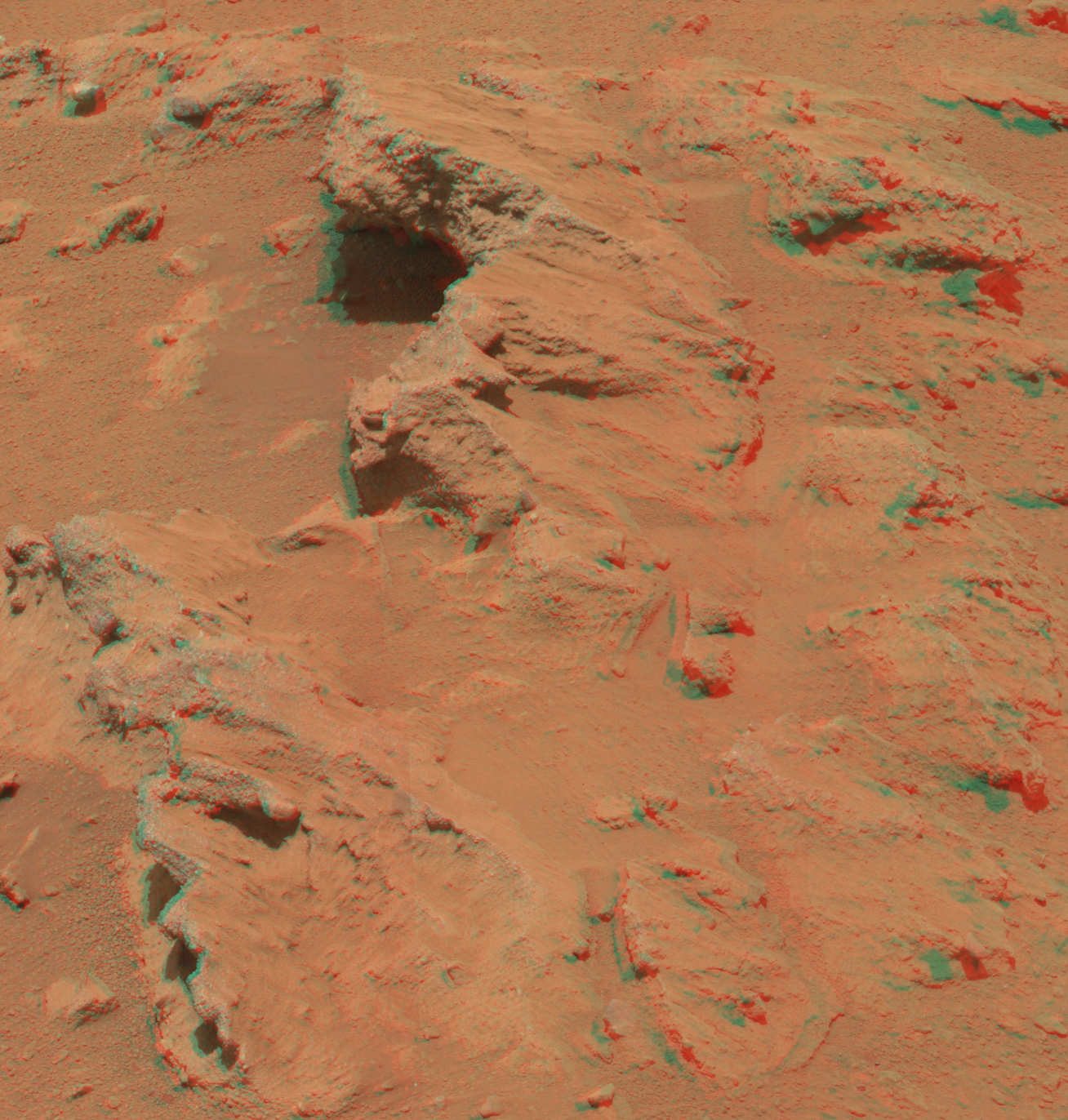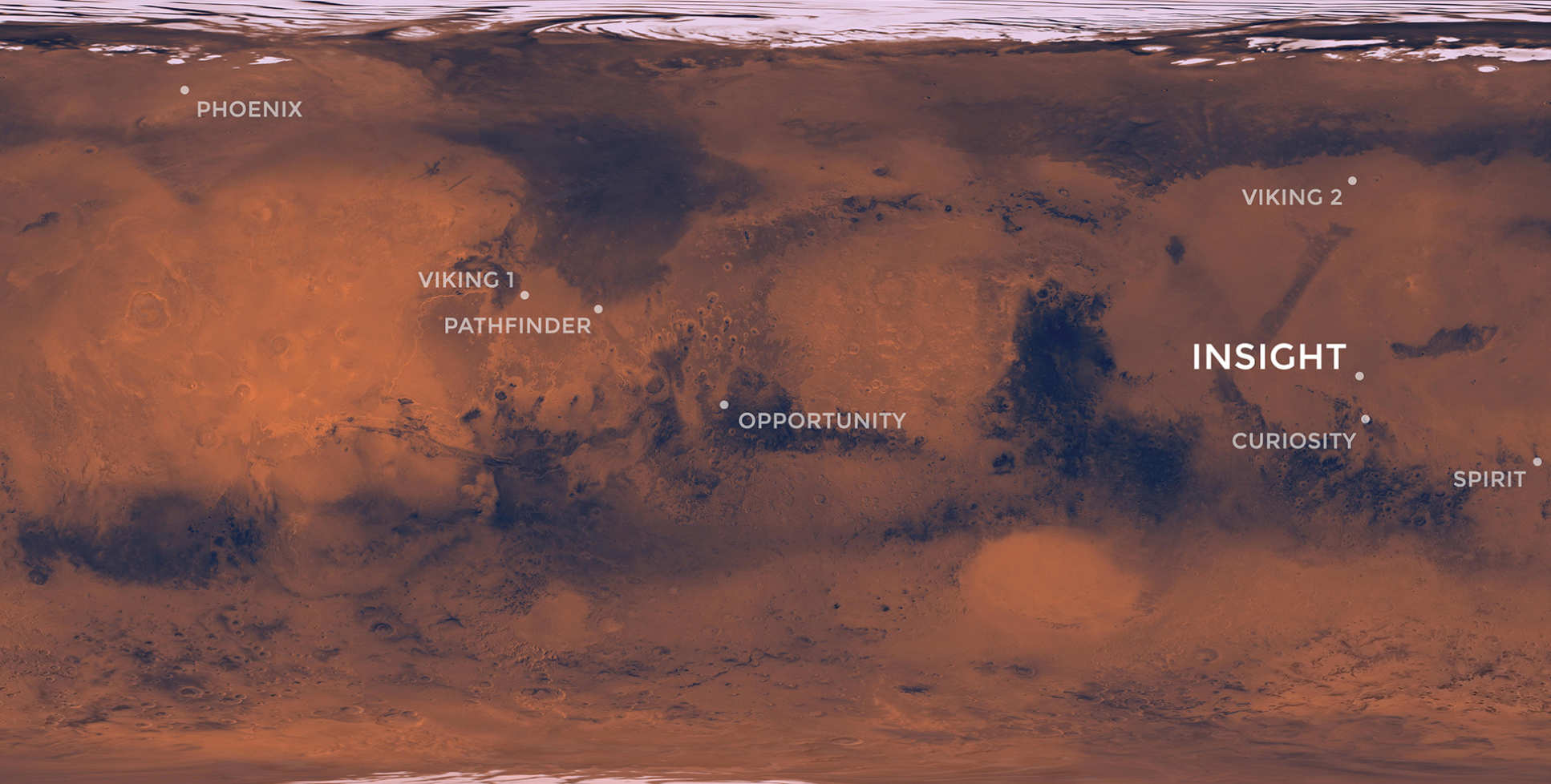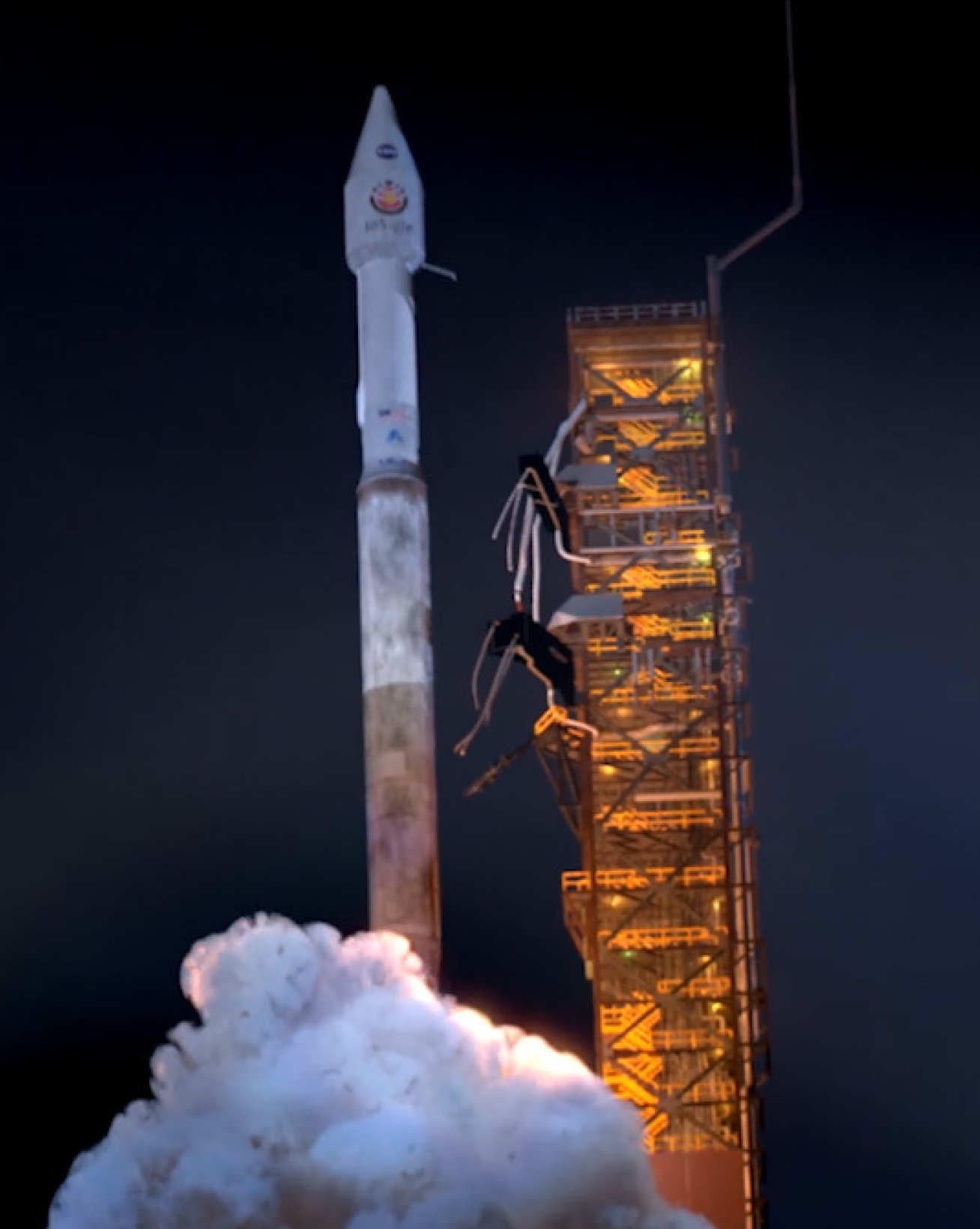
Artist's 3D rendition of the InSight lander on Mars.

A Marsquake detector designed in part by Imperial engineers has begun its 301m mile journey on board NASA's InSight spacecraft to the Red Planet.
The first mission to study the deep interior of Mars will generate unprecedented data about its inner structure. Evidence of a liquid core could hint at the likelihood of previous life on the Red Planet billions of years ago.
Mars InSight was launched on 5 May 2018 from the Vandenberg Air Force Base in California, and is expected to touch down on the Red Planet this November.
"Next stop, Mars!" - Professor Tom Pike
Professor Tom Pike, from Imperial’s Department of Electrical and Electronic Engineering, is part of the Mars Insight team. The Imperial team designed and fabricated silicon sensors as part of the Seismic Experiment for Interior Structure (SEIS), which will detect tremors below the Martian surface.
Studying Mars lets us travel to the solar system’s ancient past. Professor Tom Pike Department of Electrical and Electronic Engineering
From the tremors, the mission will build a picture of Mars’ interior and help researchers detect a solid or liquid core. The remains of a liquid core could suggest that Mars once had a magnetic field. Like on Earth, the field would have protected it from harmful solar winds billions of years ago. Back then, Mars then was much warmer and wetter, and might have been capable of harbouring early life.
Professor Pike said: “Studying Mars lets us travel to the solar system’s ancient past. While Earth and Venus' tectonic systems have destroyed most of the evidence of their early history, much of the Red Planet has remained static for more than three billion years.”
Deep insights
Over the last century, scientists have mapped our planet’s internal structure

by recording shockwaves from quakes on Earth. Thanks to this, we know that Earth has a solid crust on a slowly moving layer, with a liquid outer core and solid centre.
Now, the InSight team will gather similar information on our neighbour by detecting Marsquakes on the planet.
Professor Pike said: “This is the first time we will look deep into the interior of another planet. We know that life on Earth has been bound up over its long history with the activity deep below us. InSight will help us make comparisons with Mars, to understand how its internal evolution has led to the planet we see today.”
He added: “It’s been enormously challenging to put together such a small

sensor that’s sensitive enough to detect Marsquakes. We have produced a very different instrument to the seismometers we have previously used on Earth, but testing has shown we can detect earthquakes here with the required sensitivity we think we need on Mars.
“We've finally see our seismic sensors leave the launch pad. Next stop, Mars!”
The team predicts that the amount and intensity of quakes on Mars will be similar to those typically found in the UK. The team expect to see anywhere between a dozen and a hundred of these tremors up to 6.0 on the Richter scale over the course of two Earth years.
Other instruments on board will take the planet's temperature and measure its size. This includes RISE, a precision radio tracking of the lander to measure Mars’ rotation, and HP3 which will study heat by embedding a self-hammering thermometer under the surface of Mars.
Upcoming insights
During its six-month journey, the lander will test its instruments and send information back to NASA’s Jet Propulsion Laboratory (JPL). The researchers expect to next hear from the Imperial sensors in July 2018.
On 26 November, the lander will touch down at Elysium Planitia, near Mars’ equator.

Two sols, or Mars days, later, the lander will check its own equipment for damage. One sol is equal to 24 hours and 39 Earth minutes.

On the fourth sol, the lander will turn on Professor Pike’s sensors on the deck of the lander, but it won’t begin to detect tremors until the whole SEIS assembly is carefully lowered off the lander and onto the Martian surface. This will take several Mars weeks.
The mission will then 'listen' for at least one Mars year, or two Earth years, for the first of the planet’s vibrations. These could come from meteorite impacts as well as from activity in the planet’s interior.
Future insights?
If the mission is successful, Professor Pike wants to replicate and use the technology to study Jupiter’s icy moon, Europa.
Europa is a prime candidate for finding life in our solar system because scientists believe there is a liquid ocean beneath its icy surface. The technology developed at Imperial for InSight could also be used to detect this ocean using tremors on the Moon’s surface.

Professor Pike, Principal Investigator of the UK’s contribution to InSight, worked under funding from the UK Space Agency.
The silicon microseismometers were designed and built at Imperial's Department of Electrical and Electronic Engineering.
The integration and electronics provided by the Department of Physics at Oxford University.
The UK contribution is part of the SEIS instrument built by a European team and delivered by CNES to NASA’s Jet Propulsion Laboratory, which is leading the InSight mission.
All images are credited to NASA/JPL-Caltech/MSSS
Supporters

Article text (excluding photos or graphics) © Imperial College London.
Photos and graphics subject to third party copyright used with permission or © Imperial College London.
Reporter
Caroline Brogan
Communications Division

Contact details
Tel: +44 (0)20 7594 3415
Email: caroline.brogan@imperial.ac.uk
Show all stories by this author




Leave a comment
Your comment may be published, displaying your name as you provide it, unless you request otherwise. Your contact details will never be published.